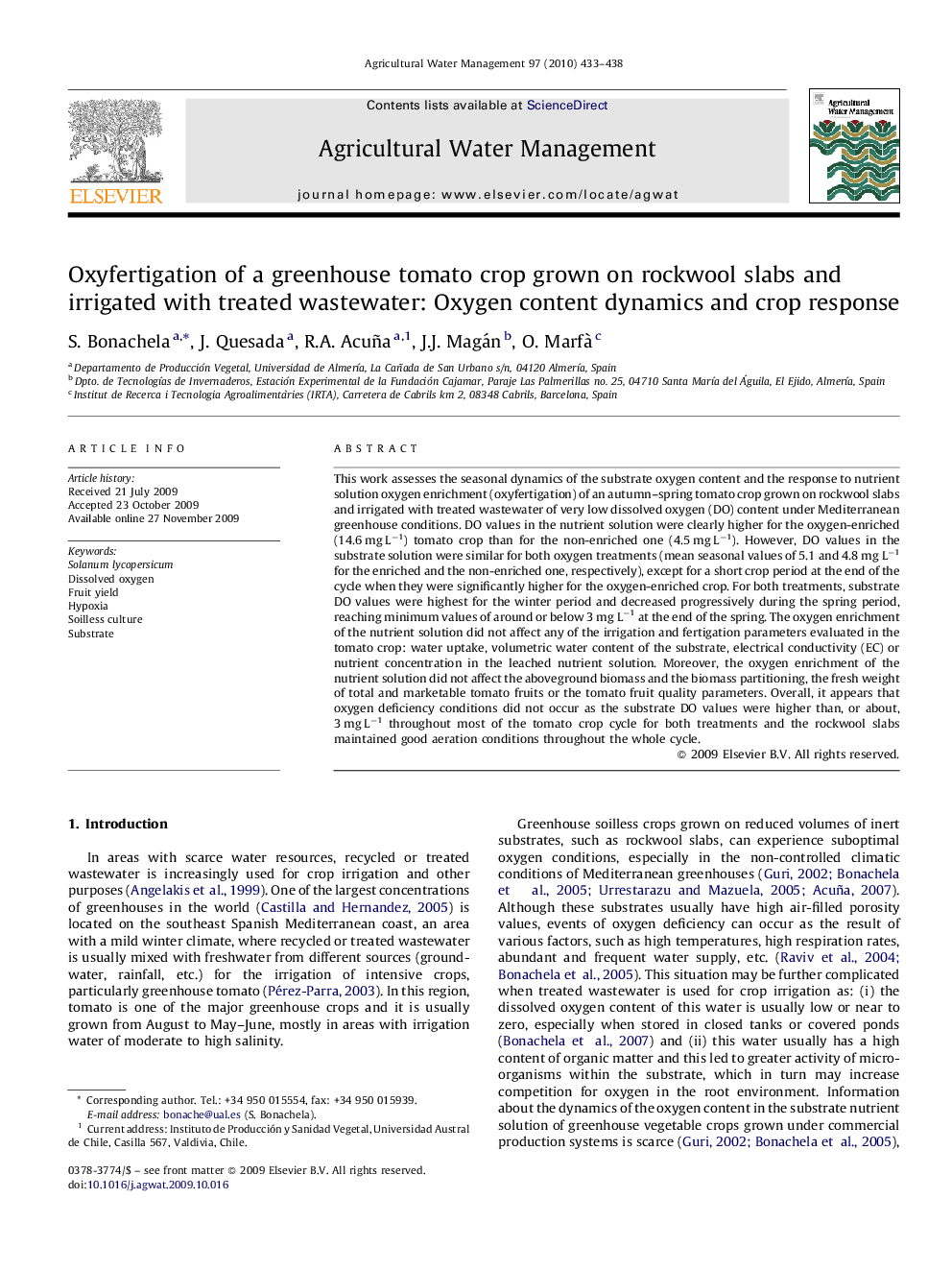| Article ID | Journal | Published Year | Pages | File Type |
|---|---|---|---|---|
| 4479930 | Agricultural Water Management | 2010 | 6 Pages |
This work assesses the seasonal dynamics of the substrate oxygen content and the response to nutrient solution oxygen enrichment (oxyfertigation) of an autumn–spring tomato crop grown on rockwool slabs and irrigated with treated wastewater of very low dissolved oxygen (DO) content under Mediterranean greenhouse conditions. DO values in the nutrient solution were clearly higher for the oxygen-enriched (14.6 mg L−1) tomato crop than for the non-enriched one (4.5 mg L−1). However, DO values in the substrate solution were similar for both oxygen treatments (mean seasonal values of 5.1 and 4.8 mg L−1 for the enriched and the non-enriched one, respectively), except for a short crop period at the end of the cycle when they were significantly higher for the oxygen-enriched crop. For both treatments, substrate DO values were highest for the winter period and decreased progressively during the spring period, reaching minimum values of around or below 3 mg L−1 at the end of the spring. The oxygen enrichment of the nutrient solution did not affect any of the irrigation and fertigation parameters evaluated in the tomato crop: water uptake, volumetric water content of the substrate, electrical conductivity (EC) or nutrient concentration in the leached nutrient solution. Moreover, the oxygen enrichment of the nutrient solution did not affect the aboveground biomass and the biomass partitioning, the fresh weight of total and marketable tomato fruits or the tomato fruit quality parameters. Overall, it appears that oxygen deficiency conditions did not occur as the substrate DO values were higher than, or about, 3 mg L−1 throughout most of the tomato crop cycle for both treatments and the rockwool slabs maintained good aeration conditions throughout the whole cycle.
